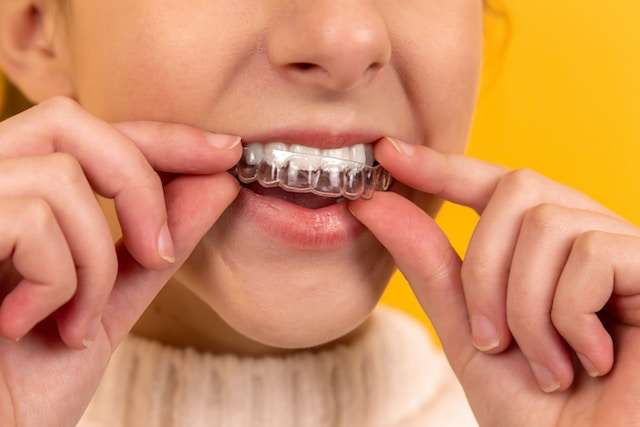Smiling has many benefits— from boosting our confidence to stress reduction to even exercise! However, misaligned teeth often prevents us from smiling, making us stay poker-faced all the time.
Many factors cause teeth misalignment. It can be caused by childhood habits such as thumbsucking and even heredity. But one thing’s for sure— we want to correct our misaligned teeth.

Braces are a common way to correct misaligned teeth. But for those who don’t want to attach metal brackets in their mouths, braces are out of the question. This is where clear aligners come into the picture. These removable transparent, plastic devices fit tightly over the teeth and guides them into their proper position.
In this article, we’ll discuss the differences between braces and clear aligners to help you decide.
Braces vs Clear Aligners: the Comparison
Braces and clear aligners are both used to align crooked teeth. However, they address different problems.
For example, clear aligners are great options to treat overcrowded, crooked, and gapped teeth. But they can’t do much if you need to raise your teeth to match the height of other teeth. Meanwhile, braces address all of these plus some complex dental problems.
Comfort and convenience
Correcting misaligned teeth can be painful whether you’re wearing braces or aligners.
For some, clear aligners are more comfortable to wear as the sharp edges in braces can cut the inner lip and tongue.
Others, on the other hand, opt for braces because of convenience— you don’t have to remove them evey meal compared to aligners. Just be mindful of your menu as braces and sticky and hard food don’t match. But with aligners, your menu is endless!
Care and cleaning
Dental hygiene is essential no matter the option you wear.
Maintaining braces only require the usual brushing and flossing of teeth. Meanwhile, clear aligners will require you to clean it along with its special tray with warm water and a special solution, in addition to brushing and flossing your teeth.
Post-treatment care
Of course, you’d still need to go to your orthodontist post-treatment, regardless of whether you have braces or clear aligners. The only difference is the frequency.
If you have braces, you’re required to go for monthly follow-up sessions while these sessions only occur once every five to six weeks for clear aligners. You’ll also wear retainers after the braces to ensure your teeth stay in the same position post-treatment.
Cost
Clear aligners are usually more expensive than braces, considering the post-treatment appointments, aftercare, and the special trays they are placed. If you frequently change trays, that’ll cost you more than having braces.
The Verdict
So, which option should you use for correcting misaligned teeth?
Honestly, it all boils down to your dental requirements and preferences. You need to remember that both braces and clear aligners address specific dental problems, with braces covering a lot more. If you opt for more discreet ways to correct your teeth, then clear aligners will suit you. However, you should always consult with an orthodontist to know which option suits your needs best.
We are not doctors and this is in no way intended to be used as medical advice and we cannot be held responsible for your results. As with any product, service or supplement, use at your own risk. Always do your own research before using.






